Brake fluid is a critical component to your vehicle’s braking system. When you press the brake pedal, the brake fluid transfers the pressure to your brake calipers and presses the brake pads against the rotors. Over time, the brake fluid can absorb air and moisture, which will allow the brake fluid to compress under pressure. This results in spongy and even ineffective braking.
Overall, this is an easy procedure that someone with some experience working on cars can do. To perform this DIY, check out the helpful tutorial above from YouTuber, CarFanatic. While the video covers the procedure on a Porsche 911, the steps for the Panamera are virtually the same. Detailed steps can be found below.
- Motive Power Brake Bleeder, For European Vehicles
- Motive Brake Fluid Catch Bottle Kit
- K Tool International Low Profile Jack (3.33 Ton)
- Slotted Polyurethane Jack Pad
- ESCO 10499 Low Profile Flat Top Jack Stands (Pair)
- Wheel Chocks
- 1/2-Inch Drive 19MM Non-Marring Lug Nut Socket
- 1/2 Inch Drive Click Torque Wrench (25-250 ft.-lb.)
- 1/2″ Drive Extension Breaker Bar
- Wheel Bolt Guide For Porsche, Audi, and VW
- 11mm Combination Wrench
- Safety Glasses
- Disposable Gloves
Wheel bolts: 118 ft-lbs
Brake fluid capacity: 1 liter
Brake bleeder valve: ~7.5 ft-lbs (or just hand tighten until snug)
Step 1: Prepare your vehicle and work area.
- Park your car on a flat surface.
- Gather tools and parts.
- Put on eye protection and gloves.
Step 2: Setup the power brake pressure bleeder.
- Fill it with 1.8 liters of brake fluid; save the 0.2 liter of fluid to top off your reservoir at the end.
- Then pressurize it to 15 psi.
- Save your extra
Step 3: Connect the power brake bleeder to your brake fluid reservoir.
- Open the hood.
- As shown in the video from Self Reliant, locate the brake fluid reservoir on the left-hand side of the engine bay near the windshield.
- Unscrew brake fluid reservoir cap and remove mesh filter.
- Screw on the power brake bleeder adapter onto the brake fluid reservoir.
- Connect the power brake bleeder to the adapter using the supplied hose and fitting.
Step 4: Prepare to bleed each brake caliper in the following order.
- Start with the rear passenger side and drain: 0.5 liter (split 50/50 for outer & inner nipples)
- Move to the rear driver side and drain: 0.5 liter (split 50/50 for outer & inner nipples)
- Move to the front passenger side and drain: 0.3 liter (split 50/50 for outer & inner nipples)
- Finish off with the front driver side and drain: 0.3 liter (split 50/50 for outer & inner nipples)
- Note: While the brake fluid capacity is only 0.95 liters, we recommend bleeding more fluid just to make sure you remove all the old fluid.
Step 5: Remove your wheels.
- You will need to remove your wheels to access the brake calipers.
- As shown in the video, we recommend you lift one corner at a time.
- Note: If your vehicle has air suspension, you will need to disable the self-leveling feature. With key in the “ON” position, hold the air suspension button up for 10 seconds until the indicator appears on the gauge cluster.
- Before you lift your car, be sure to chock off the wheels on the opposite side to prevent your car from rolling.
- Use a 19mm lug nut socket and breaker bar to break loose the wheel bolts; do not remove them yet.
- Jack the corner you will be working on up, place a jack stand underneath on the approved jack point location, then lower the jack until your vehicle sits securely on the jack stand.
- Give your vehicle a shove to make sure it is secure.
- Remove the wheel bolts, then remove the wheel; we recommend you use two wheel guide bolts to make removing and reinstalling the wheel easier.
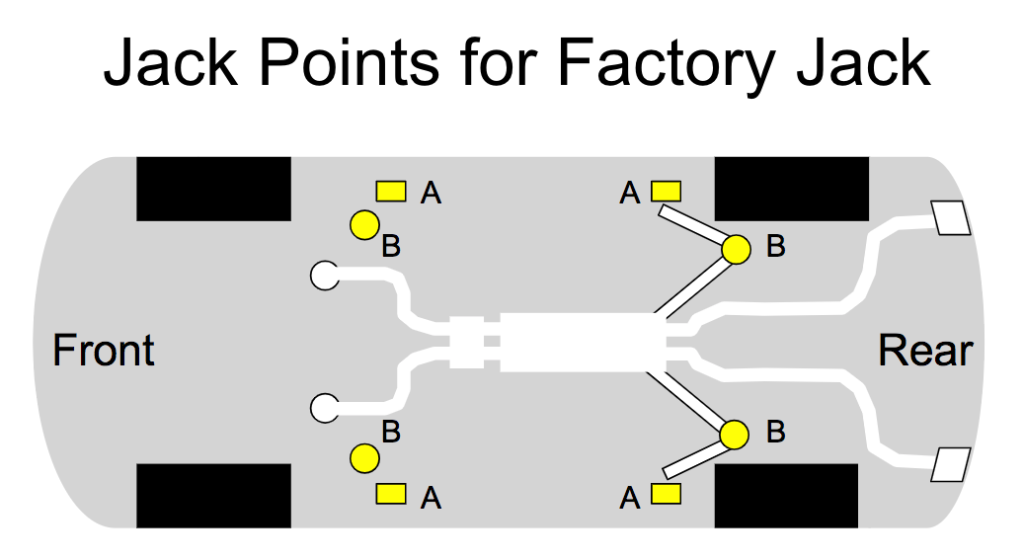
Step 6: Bleed each brake caliper.
- Drain the outer and inner brake caliper nipples by connecting the catch can and loosening the nipples with an 11mm wrench.
- Monitor how much brake fluid you are collecting, so you don’t drain too much.
- Once you’ve drained enough fluid from each nipple, tighten it to stop the flow of brake fluid; DO NOT OVER-TIGHTEN the brake caliper nipples or you can easily brake them. The nipples just need to be snug.
- Re-install the wheel and torque it to 118 ft-lbs.
- Repeat these steps for each brake caliper.
Step 7: Lower your vehicle.
- Remove the jack stands.
- Remove the wheel chocks.
Step 8: Top off your brake fluid reservoir.
- Depressurize the power brake bleeder and disconnect it from the brake fluid reservoir.
- Remove power brake bleeder adapter from the brake fluid reservoir.
- Top off the brake fluid reservoir with the remaining fresh brake fluid to get the level just under the “max” line.
- Re-install the brake fluid reservoir filter, cap, and plastic cover.
Step 9: Clean up your work area.
- Empty your old brake fluid into the now empty brake fluid container.
- DO NOT dispose of your old brake fluid by pouring it out or putting it in the trash; brake fluid is extremely corrosive and bad for the environment, so be sure to take the old fluid to your local auto parts store for recycling.
- Put all of your tools and supplies back where they belong.
- You’re all done!

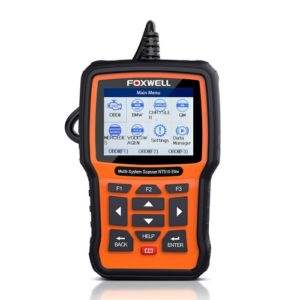
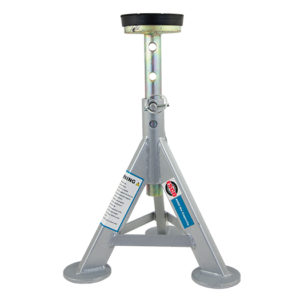
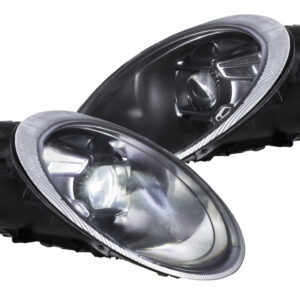
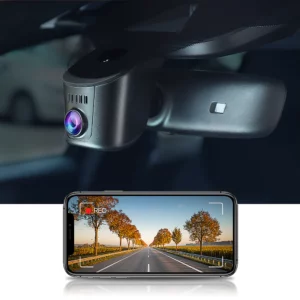
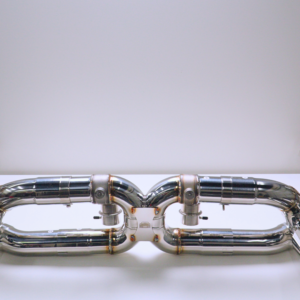

Bob Walters says:
Good advice but DIY mechanics should be aware that “racing” fluid may not be the best choice for a car driven on the street. Actual racing puts tremendous loads on the brakes and aggressive Track Day driving is almost as punishing especially because few race cars use stock brakes but many Porsche enthusiasts do Track Days on bone stock brakes. When the hot brakes overheat the fluid, it can boil leading to drastically reduced brake performance. “Racing” fluid will have a higher dry boiling point than “Normal” fluid and that’s good but it’s not the whole story. Unfortunately, brake fluid formulated for a high dry boiling point results in a fluid which tends to absorb moisture from the air more readily. When brake fluid has absorbed 3.7% moisture by volume, the “wet boiling” point becomes the important data point because it’s always lower than the dry boiling point. A racer changes fluid frequently, so the fluid doesn’t have time to absorb moisture. But cars driven on the street may not have their fluid changed for years or even decades, slowly absorbing moisture all the while. A high performance car like a Porsche will have large brakes with plenty of reserve capacity for street use and may never approach operating temperatures which overheat the fluid. Therefore, an “ordinary” fluid with a lower dry boiling point but less tendency to absorb moisture might be a better choice than “racing” fluid for those who do not punish their brakes. If you do use “racing” fluid, realize that you should flush your fluid more frequently even if you don’t actually race your car.
eCarGuides says:
Great comment Bob. You are spot on. We do like the ATE TYP 200 because its a more aggressive fluid than stock, but still resists absorbing moisture pretty well.
J. King says:
How critical is it to use a scan tool to activate the ABS to remove the old brake fluid in the ABS?
ecarguidesllc says:
Hi J King. It isn’t necessary unless you have air trapped in the ABS unit, which would cause a spongy brake pedal even if you properly flush the rest of the system. Here’s a scan tool that you can use if you need to flush the ABS unit. https://ecarguides.com/product/foxwell-nt510-elite-scan-tool-porsche-software/